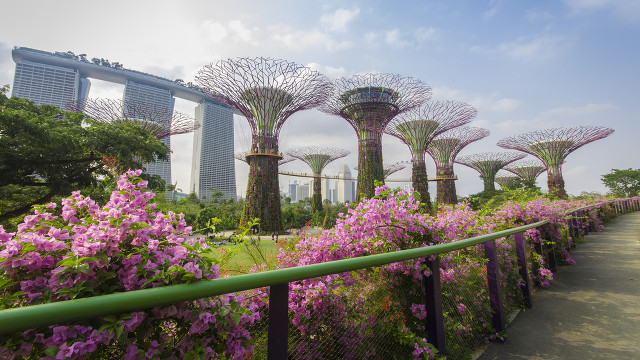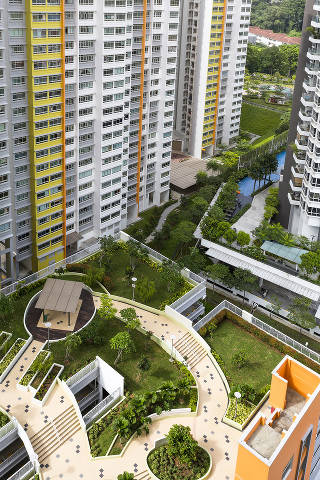SUMMARY
This is AI generated summarization, which may have errors. For context, always refer to the full article.

MANILA, Philippines – If all new buildings in the Philippines were required to follow ecologically-sound building standards starting 2015, businesses and consumers can save up to P35.2 billion ($800 million) by 2030.
This was the estimate given by the Department of Public Works and Highways (DPWH) when it announced its goal to have the Green Building Code approved by DPWH Secretary Rogelio Singson by early 2015.
A draft of the code should be ready by June 2014, said Johnson Domingo, executive director of the National Building Code Development Office of the DPWH.
“The DPWH will then conduct stakeholders’ consultation meetings on the draft code from July to September this year,” he said during an April 23 forum on green buildings held in Makati.
The code is a “greenified” version of the existing National Building Code of the Philippines which lays down standards on all aspects of building construction, mostly to ensure safety and integrity of the structure.
The Green Building Code, on the other hand, focuses on features of buildings that can be used to reduce electricity consumption, water consumption and greenhouse gas emissions. (READ: 10 features of a ‘green’ building)
The ecologically-friendly code will not replace the National Building Code but will be used as a reference.
Mitigates climate change
Environmentalists have long championed green building and green architecture as ways of lessening harmful impacts on the planet.
“Because of all the electricity they consume, buildings are the third biggest source of carbon dioxide in the world, after fossil fuel industries and the transport sector,” Climate Change Commissioner Heherson Alvarez told Rappler.
“If we are able to retro-fit our old buildings and build our buildings according to green building standards, we’ll save a lot of electricity and spare humanity a lot of carbon and pollution.” (READ: Condo living with a green conscience)
If the Green Building Code is properly implemented, it can prevent the emission of 1.90 million tons of carbon dioxide, according to DPWH.
Commercial buildings consume 36% of annual national energy consumption. The strict implementation of the code can save 4 million megawatts per hour of electricity by 2030.
 Though the Code is still in its draft stage, Domingo told Rappler they are aiming to make it mandatory for all new buildings with a large total floor area.
Though the Code is still in its draft stage, Domingo told Rappler they are aiming to make it mandatory for all new buildings with a large total floor area.
Developers who wish to construct major building projects would have to adhere to the requirements of the Code before they are given a building permit.
“It targets developers who can spend. Through the years, depending on the response, the floor area requirement can be reduced so everyone will have to follow,” said architect Emelito Punsalan of the Philippine Green Building Initiative.
It will take some adaptation before the Code can be imposed on all kinds of buildings, mainly because of the higher cost of building green.
Energy-efficient air-conditioning systems, heat-deflecting window glass, water-saving faucets and toilet flushing systems can be pricey.
But though it jacks up investment cost, it lowers operating costs because of the electricity and water saved, Punsalan told Rappler.
At the same time, developers can buy smaller air-conditioning systems instead of high-powered, expensive ones because of the cooling effect of green building standards.
Incentives needed
But it will take more than an approved Green Building Code to encourage architects, developers and consumers to embrace ecologically-sound buildings.
Financial incentives like reduced tax for imported devices to be used for green buildings, lowered property taxes, and loans for green projects are some concrete ways to get the ball rolling, said Punsalan.
Implementation of the Code is likely to be challenging because of a severe lack of building inspectors.
Most local government units in the Philippines lack a dedicated city building official, the authority in charge of ensuring that the National Building Code is strictly followed in their community.
In most LGUs, the tasks of a city building official are simply given to the city engineer. Given their primary role of overseeing the LGUs’ infrastructure projects, city engineers are often unable to monitor every construction phase of all the buildings in their area of responsibility.
Legislation for green buildings could help address these concerns. There are 3 green building bills in the Senate.
A bill creating a Green Building Commission was filed by senator Miriam Defensor-Santiago. A bill for a rating and certification system and incentive scheme was filed by Ferdinand “Bongbong” Marcos Jr. Senator Lito Lapid also filed a bill imposing green building standards on all government buildings.
Marcos, as chairman of the Senate Committee on Public Works, presides over the hearings of these bills which he has made a priority, said his staff Roy Reyes.
The committee is now waiting for DPWH’s draft of the Green Building Code which will serve as the law’s Implementing Rules and Regulations. It has also requested for inputs from the Department of Energy.
After one more hearing on the technical working group for the bill, the committee will release its report and sponsorship. – Rappler.com
Singapore Gardens by the Bay image from Shutterstock
Green buildings image from Shutterstock
Add a comment
How does this make you feel?
There are no comments yet. Add your comment to start the conversation.